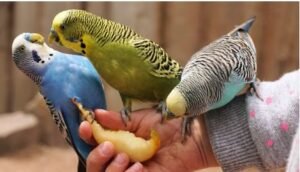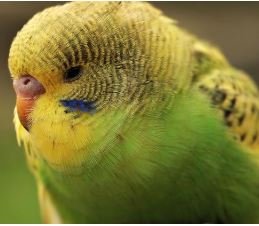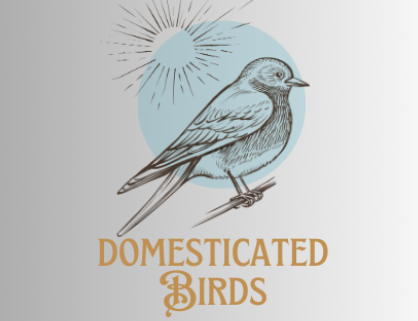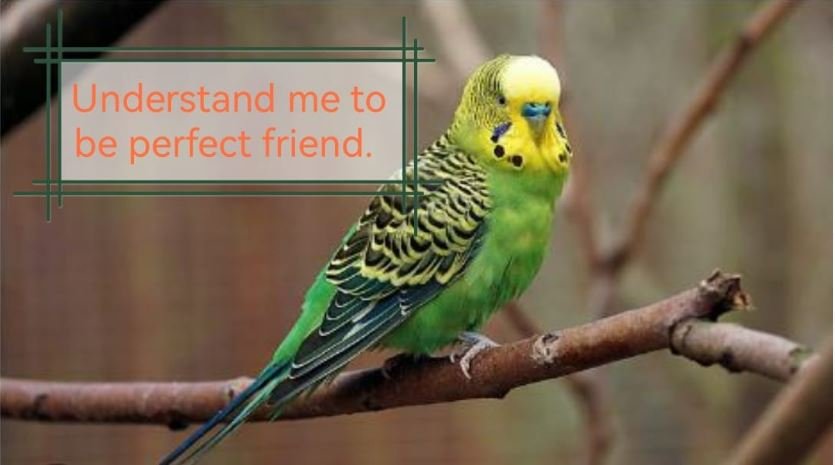Introduction to Budgies
Before addressing budgie behaviors as a pet, we have to introduce budgie. Budgerigars, commonly known as budgies, are small parrots native to Australia. Their scientific name is Melopsittacus undulatus. These charming birds have captivated pet lovers worldwide with their vibrant colors, playful antics, and charming personalities.
Unique Traits of Budgies
Budgies possess several unique traits that make the budgie behaviors as a pet much more fascinating:
Vibrant Plumage: Budgies display a kaleidoscope of colors, ranging from bright yellows and greens to mesmerizing blues and purples.
Social Creatures: These birds thrive on social interaction and form strong bonds with their human caregivers.
Inquisitive Nature: Budgies are curious by nature, often exploring their surroundings with boundless energy.
Vocal Mimicry: Renowned for their ability to mimic human speech and environmental sounds, budgies can be excellent chatterboxes.

Budgie Behaviors as a Pet
As beloved pets, budgies exhibit a wide range of behaviors that reflect their unique personalities and needs. Understanding these budgie behaviors as a pet is essential for providing optimal care and nurturing a fulfilling relationship with your feathered friend.
Head Bobbing: A Sign of Happiness
Both male and female budgies engage in head bobbing, a rhythmic movement that signifies contentment and happiness. This behavior is particularly common when budgies are listening to music or interacting with their favorite toys.
Thirst and Hunger: Basic Needs
When thirsty or hungry, female budgies may display distinct behaviors to communicate their needs. While males often chirp loudly to attract attention, females may peck at their food or water dish more vigorously.
Mating Behaviour: Courtship Rituals
During mating season, budgies showcase elaborate courtship rituals to attract potential mates. Males may puff up their feathers and perform intricate dances, while females respond by vocalizing and fluttering their wings.
Sexual Frustration: Agitated Behavior:
Unfulfilled reproductive instincts can lead to sexual frustration in budgies, resulting in agitated behavior such as excessive vocalization, pacing, and even aggression towards humans or other birds.
Coping with Stress
Budgies are sensitive creatures prone to stress in unfamiliar or unsettling environments. Signs of stress may include feather ruffling, decreased appetite, and excessive grooming.
Hormonal Fluctuations
Both male and female budgies experience hormonal fluctuations, especially during breeding season. This can manifest in territorial behavior, mood swings, and increased vocalization. so, to prevent our feathered friend, we have to understand budgie behaviors as a pet.

Feather Plucking: A Sign of Distress
Feather plucking is a concerning behavior that may indicate underlying health issues or emotional distress in budgies. Common triggers include boredom, loneliness, or environmental changes.
Nibbling Fingers: Curiosity or Affection
Budgies may nibble on their caregiver’s fingers as a sign of curiosity or affection. While gentle nibbling is typically harmless, excessive biting may indicate discomfort or territorial aggression.
Aggression: Understanding Triggers
Aggressive behavior in budgies can stem from various triggers, such as perceived threats to their territory or possessions. It’s essential to identify the underlying cause and address it through positive reinforcement and environmental enrichment.
Aging Gracefully
As budgies age, their behavior may change due to declining health or cognitive function. Providing extra care and attention can help senior budgies maintain their quality of life and enjoy their golden years. so, these were the budgie behaviors as a pet.

Conclusion: budgie behaviors as a pet
In conclusion, budgies are delightful companions with complex behaviors that reflect their emotional and physical well-being. By observing and understanding their actions, caregivers can nurture a harmonious bond with these beloved feathered friends.
FAQs
Why do budgies pluck their feathers?
Feather plucking in budgies can be caused by various factors, including stress, boredom, or medical conditions. It’s essential to consult a veterinarian to determine the underlying cause and provide appropriate treatment. This and other behaviors are discussed while discovering fascinating budgie behaviors as a pet in this article.
How do female budgies display hormonal behavior?
Female budgies may exhibit hormonal behavior during breeding season, such as increased vocalization, nesting behavior, and territorial aggression towards other birds or objects. so, to prevent our feathered friend, we have to understand budgie behaviors as a pet.
What are common triggers for budgie aggression?
Budgie aggression can be triggered by factors such as territorial disputes, perceived threats, or lack of socialization. Providing a safe and enriched environment can help reduce aggressive behavior. This and other behaviors are discussed while discovering fascinating budgie behaviors as a pet in this article.
What does it mean when a budgie nibbles fingers?
Nibbling fingers can be a sign of curiosity, affection, or territorial behavior in budgies. Caregivers should observe their budgie’s body language and respond accordingly to ensure positive interactions.
How can caregivers support aging budgies?
Caregivers can support aging budgies by providing a comfortable and stimulating environment, a nutritious diet, regular veterinary check-ups, and plenty of love and attention.
How can I tell if my budgie is stressed?
Signs of stress in budgies may include excessive grooming, feather plucking, or hiding. It’s essential to identify and address the source of stress to promote their well-being.
Why is my budgie plucking its feathers?
Feather plucking in budgies can have various causes, including stress, illness, or hormonal imbalances. Consulting with a veterinarian can help determine the underlying cause and appropriate treatment. This and other behaviors are discussed while discovering fascinating budgie behaviors as a pet in this article.
What should I do if my budgie shows signs of aggression?
If your budgie displays aggressive behavior, it’s essential to identify the trigger and provide appropriate environmental modifications or training. Avoiding situations that provoke aggression and promoting positive interactions can help manage their behavior.
How can I keep my budgie entertained?
Providing a variety of toys, perches, and interactive activities can help keep budgies mentally stimulated and entertained. Rotating toys regularly and introducing new challenges can prevent boredom and encourage natural behaviors.
Is it normal for budgies to nibble on fingers?
Budgies may nibble on fingers as a form of exploration or play. While this behavior is generally harmless, it’s essential to set boundaries and discourage biting too forcefully.
What changes can I expect as my budgie gets older?
As budgies age, they may become less active, sleep more, or require additional support with grooming and feeding. Monitoring their health closely and providing gentle care can ensure their comfort in their senior years


Хрумер Обучение
Kwork Overview
Обучаю делать ссылочную массу на сайт или социальную сеть програмным обеспечением XRumer.
В обучение входит Настройка Xрумера для работы в режиме постинг
Покажу сайты где брать прокси, VPS сервис
Свожу баланс (оптимизирую) хрумер, ксевил и сервер, для эффективной работы.
Работаю на 6-й версии ксевила
План такой!
Устанавливаем XRumer на удалённый сервер (личный компьютер не подходит для работы)
Показываю настройки для работы и составление проекта
Постинг будет производиться в блоги и коментарии, форумы не использую по причине модерации и жалоб от модераторов, поэтому настройку почты не делаю
Сбор базы в обучение не входит.
вывод из запоя в ростове-на-дону вывод из запоя в ростове-на-дону .
вывод из запоя в ростове-на-дону вывод из запоя в ростове-на-дону .
вывод из запоя ростов вывод из запоя ростов .